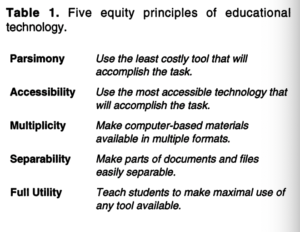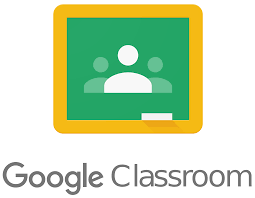I thoroughly enjoyed watching the documentary “Without A Net” the other night and I have included some quotes from the video that I hold closely.
“Instead of a wife swap, we need a school swap… everyone needs to get a feel of what we actually go through.” Isn’t this the truth? Many higher income schools don’t need to worry about the issues that some public schools are facing in today’s technology-driven world. The debate from Wednesday opened my eyes seeing the difficulties many public schools are struggling with integrating technology into their education on a daily basis. This topic allowed me to reflect on my personal experience as a student who grew up in a small community and I can compare it to where I teach now (in the city). We take our technology for granted in the school where I teach. When the wifi is slower than normal, we panic. I can’t imagine how other schools who have limited access to technology feels…
“23% of school districts do not have sufficient bandwidth to meet the current needs for digital learning”
The disagree side of our debate mentioned three distinct challenges that we face bringing technology into the schools. They are:
Challenge #1) securing up-to-date working devices (hardware)
Challenge #2) getting those devices online (connectivity)
Challenge #3) skills needed to implement the proper use for technology effectively (teacher training)
All of these issues can be related to funding issues in our education system. We need more money to integrate technology into each classroom and ensure the bandwidth is sufficient for the amount of devices used. This is a problem that my school is current facing. This costs a LOT of money. My question is, where can we get more funding? It seems like every school needs supplemental funding to keep up with today’s trends in education… never mind the schools that have to dig into the ground and add in fibre optics. They may never get adequate funding to meet the needs of their students. My heart breaks for them.
“By 2020, 77% of all U.S. jobs will require computer skills.” – U.S. Department of Labor
This quote states that in order for students to prepare for their future, kids need access to technology and wifi. If kids don’t learn with computers and technology, they will be left behind AND may never get the proper education they need to fulfill their dreams. Just as the second group stated, the digital divide continues to widen. The less fortunate becomes even more less fortunate and their education is falling behind everyone else.

“Schools that have successfully integrated technology into their classrooms have seen an 11% gain in math proficiency and an 8% gain in reading proficiency.” – The Rand Corporation
These statistics are great. However, we need those numbers to be greater… If we can help less fortunate schools up-to-date with technology, we can agree to the debate question: does technology lead to a more equitable society. Yes, maybe in the future it can. Right now, we can’t agree that EVERYONE has equal access to technology. And not every student is receiving the same education experiences. The wealthier communities continue to receive better education and the families living in poverty are just scraping by once again.
I agree with the first group in the debate that effective technology use can transform learning making it more engaging, relevant and accessible. There are MANY free apps out there (for example DESMOS) that students can access instead of purchasing a calculator for class. There are also many apps that aids students with disabilities and we should be grateful for the advancements in technology. Technology also accommodates different learning styles and students are able to watch instructional videos, tutorials and interactive simulations that aid their learning. This is a positive push in the right direction to provide equity in one’s learning.

As mentioned in the discussion on Wednesday and earlier in my blog post, we are moving in the right direction with technology. However, we still have a gap in the digital divide in education.





 I didn’t forget about the disagree side of this argument. I am 100% on board that AI dehumanizes education. The future of AI scares me and I fear that students are
I didn’t forget about the disagree side of this argument. I am 100% on board that AI dehumanizes education. The future of AI scares me and I fear that students are 


